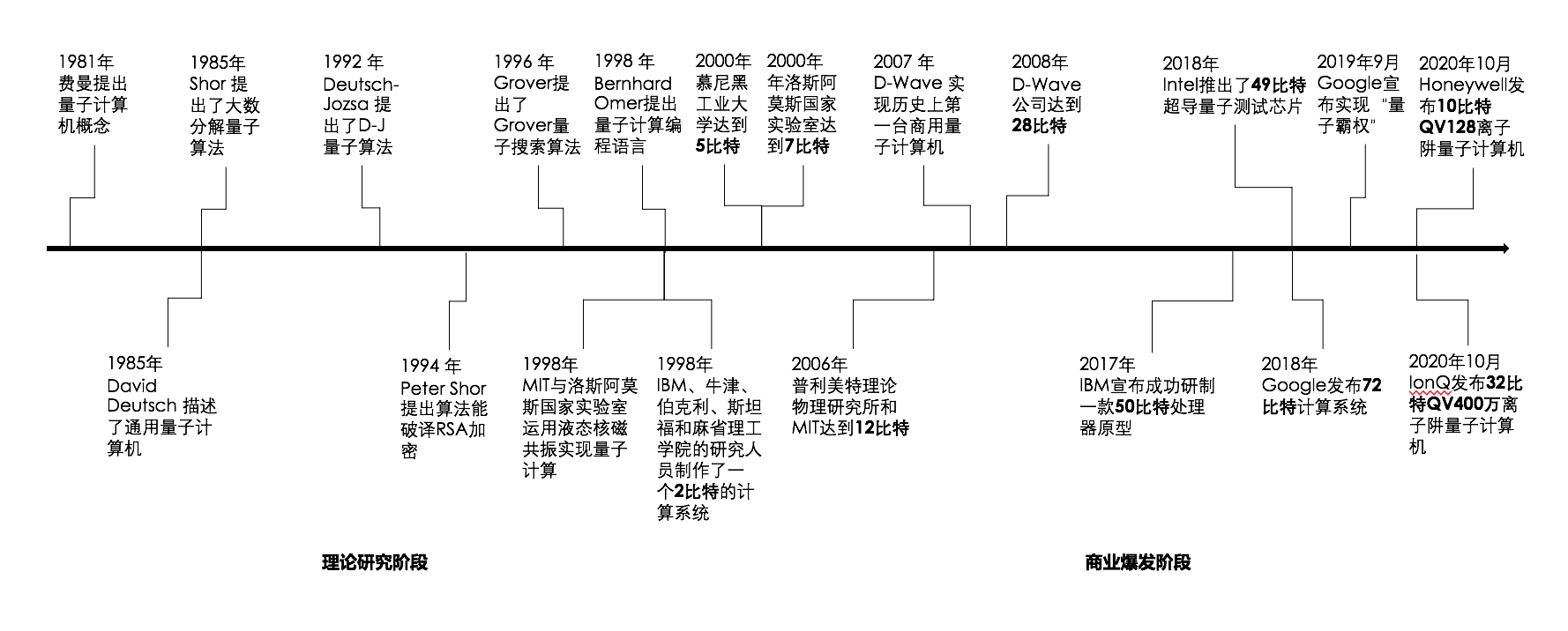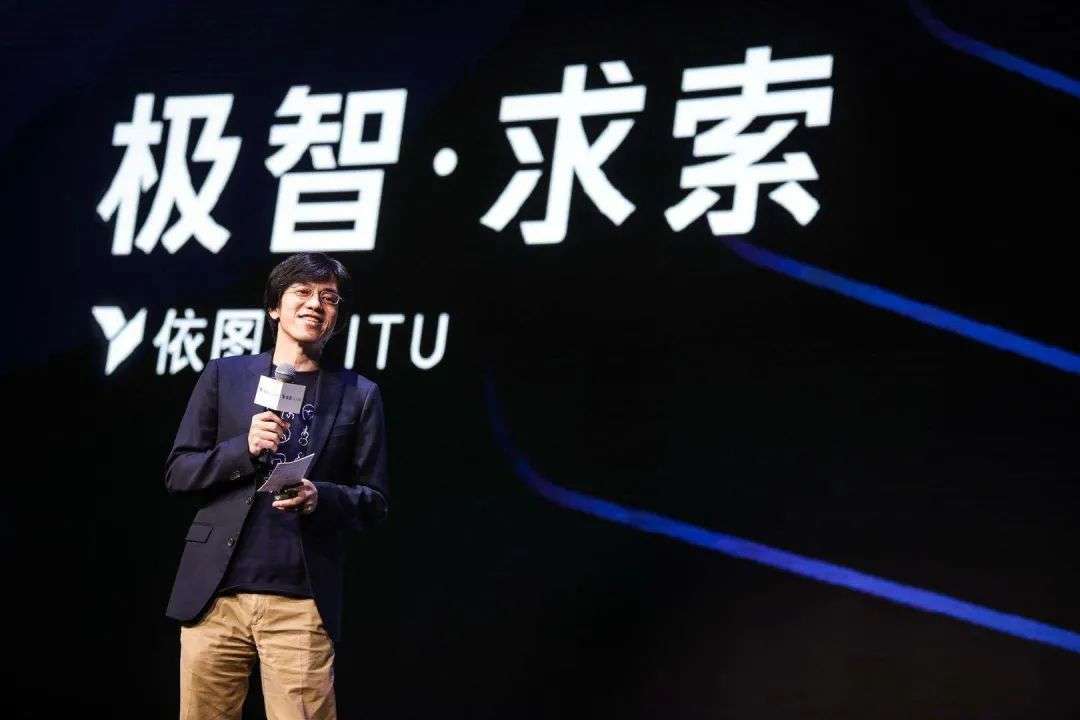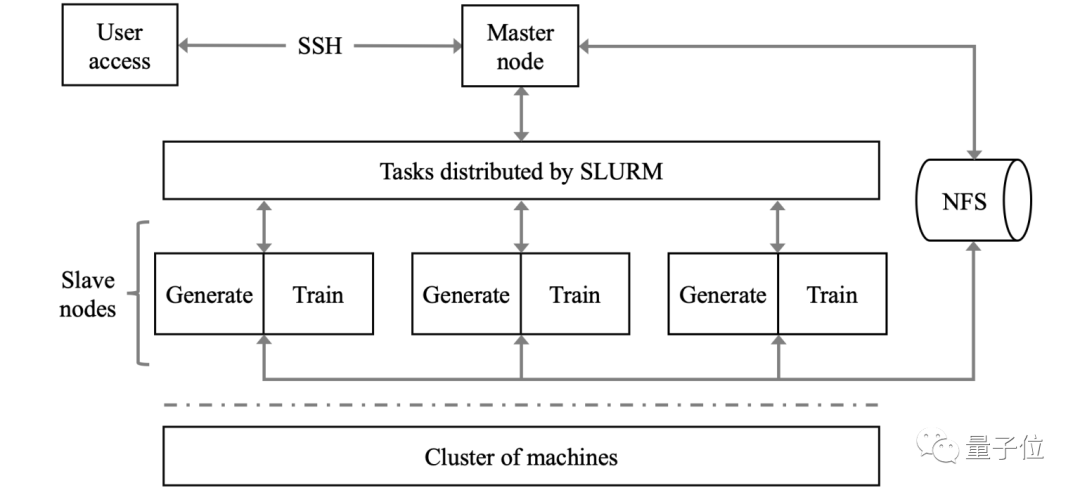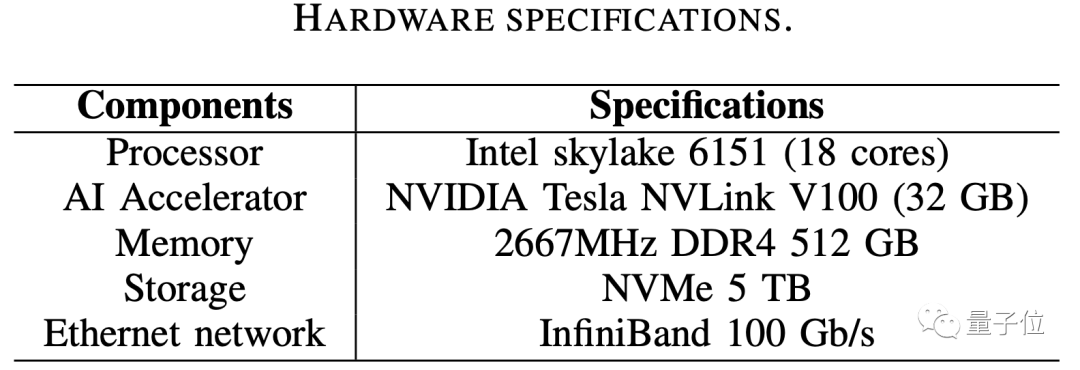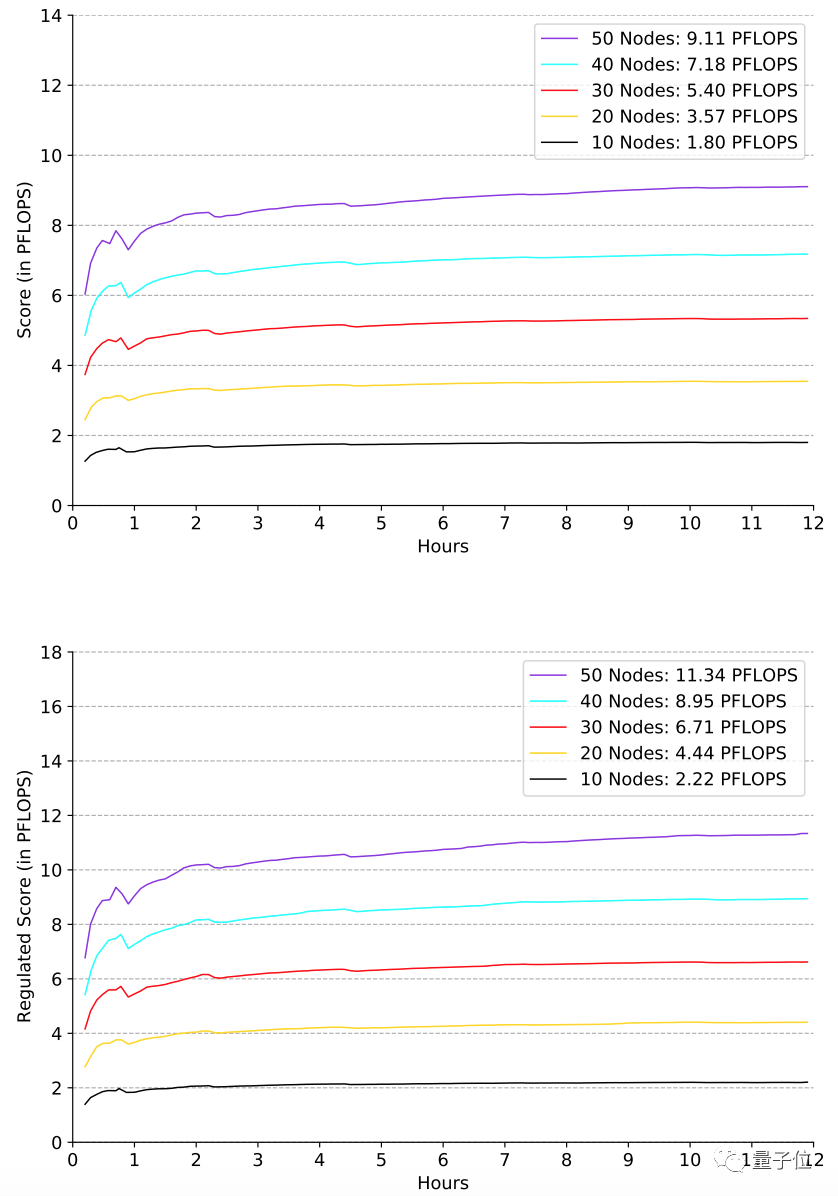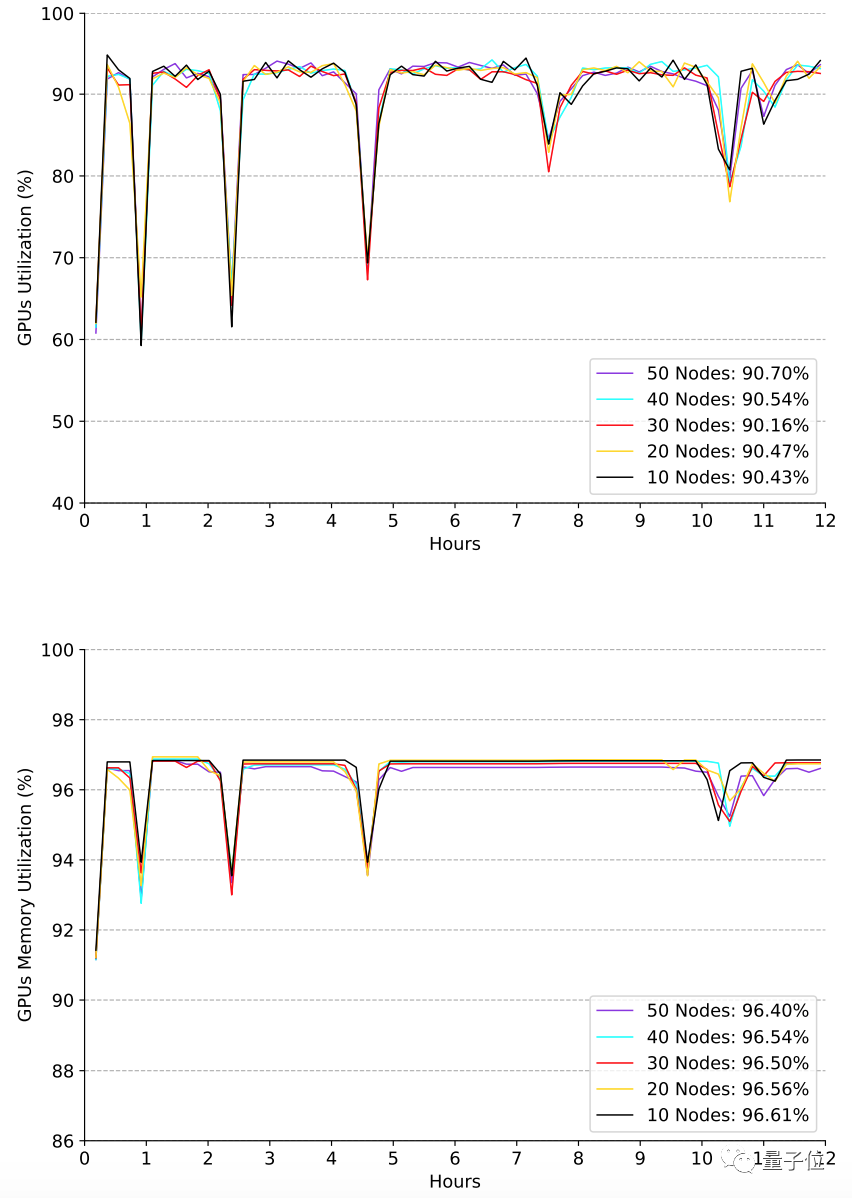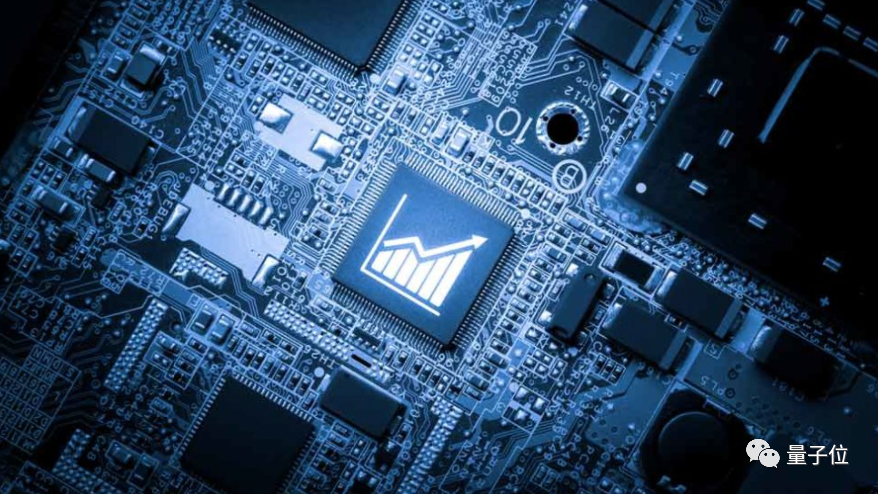Moore's Law is approaching the upper limit, quantum computing has become an important breakthrough method
Away from the magnificent 2020, we are about to usher in a turbulent new decade full of hope and unknown. The dual promotion of technology and capital is the main theme of this decade, and it is likely to become the main thrust of innovation in the next decade. Therefore, approaching the end of 2020, we launched the "Annual Industry Research" series, and selected the most concerned areas for systematic review. These industries are either rewriting the current new economic landscape, or are likely to reshape the future business or even the international landscape, or are of interest to readers, or are having a huge social impact. We also hope to use this method to "expand the boundary infinitely" with my readers, and "see the future first" together.
This article is one in this series. We chose the industry of quantum computing. In 2020, quantum computing will continue to achieve technological breakthroughs. General Secretary Xi Jinping's speech in the collective study of the Political Bureau of the Central Committee on October 16 also brought more people's attention to quantum computing. In fact, important players in global quantum computing in 2020 will continue to achieve technological breakthroughs. In the future, this is not only the key to breaking through Moore's Law, but also an important variable affecting the international situation.
In 2020, quantum computing will continue to achieve technological breakthroughs. General Secretary Xi Jinping's speech in the collective study of the Political Bureau of the Central Committee on October 16 also brought more people's attention to quantum computing.
In fact, important players in global quantum computing in 2020 will continue to achieve technological breakthroughs. In the future, this is not only the key to breaking Moore's Law, but also an important variable affecting the international situation.
This article will sort out the quantum computing industry from the following aspects: the history of quantum computing, technical principles and scientific research difficulties, main technical paths, application directions, comparison of development levels between China and foreign countries, inventory of players on the same track at home and abroad, etc.
1. Quantum computing is inevitable to break through Moore's Law
According to Moore's Law, the number of components that can be contained on an integrated circuit approximately doubles every 18 months, and the computing performance of the computer also doubles. At present, the integrated circuit manufacturing process is in the 14nm and 10nm technology generation stage of mass production, and the smaller size technology generation of 7nm and 5nm is in the research and development stage, which is about to reach the physical limit of control electronics. Because when a single transistor shrinks to only one or a few electrons, a single-electron transistor will appear, and the quantum tunneling effect will affect the normal operation of electronic components.
The unit of storing information in a classic computer is a binary bit (Bit), that is, a bit represents "0" or "1". The unit of information storage in a quantum computer is a qubit. In addition to "0" and "1", qubits can also represent various combinations of "0" and "1". This makes quantum computers far exceed the computing power of classical computers (what we know as "quantum hegemony" refers to quantum computing devices that exceed the computing power of all classical computers in specific test cases). Therefore, to break through the bottleneck of Moore's Law, quantum computing is a very promising choice.
2. The history of quantum computing
Since Feynman proposed the concept of quantum computer in 1981, quantum computing has entered the stage of theoretical research. However, most of the more milestone progress afterwards are in the direction of quantum algorithms. The Detusch-Jozsa algorithm clearly demonstrated the advantages of quantum computing for the first time, but the algorithm is more scientific than practical. Later, the practical algorithms proposed by people are mainly divided into two categories, namely the prime factor decomposition algorithm and the unordered search algorithm, represented by the Shor algorithm and the Grover algorithm respectively. In 1994, Shor proposed the quantum algorithm for decomposition of large numbers, exponential speeding up the decomposition of large numbers, in 1996 Grover proposed a quantum search algorithm, which accelerated the search of disordered databases by the square root . In 1998, researchers from IBM, Oxford, Berkeley, Stanford, and the Massachusetts Institute of Technology produced a 2-bit computing system.
Since D-wave realized the first commercial quantum computer in history in 2007, quantum computing has entered a period of commercial explosion. In 2017, IBM announced the successful development of a 50-bit processor prototype, and "quantum hegemony" entered a critical period of contention. In 2018, Intel and Google reached 49 bits and 50 bits one after another. In 2019, Google used a 53-qubit quantum computer to complete the world's most powerful supercomputing Summit's 10,000-year computing experiment in 3 minutes, and announced that Google has achieved "quantum hegemony." In the second half of 2020, quantum computing giants are vying to release the latest scientific research results and products, including Honeywell's 10-bit QV128 ion trap quantum computer and IonQ's 32-bit 4 million ion trap quantum computer.
(Image source of quantum computing events: 36 krypton sorted according to public information)
3. Principles and difficulties of quantum computing
The unit of storing information in a classic computer is a binary bit (Bit), that is, a bit represents "0" or "1". The unit of information storage in a quantum computer is a qubit, which has two special properties: Superposition and Entang lem ent.
In addition to expressing "0" and "1", qubits can also express various combinations of "0" and "1", which is superposition. Because of superposition, the quantum computer can calculate all the results of this state at once. And this state will collapse to a certain value of "0" or "1" when observed. Therefore, although quantum computing has such a huge advantage of invisible parallel computing, we can only get one result at a time. Therefore, in order to give full play to the advantages of quantum computing, we need to design corresponding algorithms to take advantage of this invisible parallel computing advantage of quantum computing.
The nature of entanglement is reflected in the fact that a researcher prepares a pair of entangled qubits. When in the state of a single qubit, changing the state of one of the qubits will instantly change the other, even if they are far apart in the universe. This property makes the computing power of the computer increase exponentially when qubits are added to the quantum computer.
The realization of quantum computers requires quantum preparation and control capabilities. However, qubits are very fragile. Interaction with the environment will cause the quantum behavior to attenuate or even disappear. The slightest vibration or temperature change may weaken the computing power of the computer and cause calculation errors. This is also the qubit experiment that needs to be performed at ultra-low temperature or under vacuum s reason. Adding more qubits will help, but it may take thousands of qubits to ensure a highly reliable logical bit. However, adding one qubit will increase the difficulty of the experiment exponentially.
At present, various experimental platforms are far away from the tens of thousands of qubits required for practical quantum computing, and there is still room for significant improvement in the fidelity of quantum logic gates and the threshold of fault-tolerant quantum computing.
At the same time, not all calculation processes, quantum calculations have advantages over classical calculations, such as ordinary addition, subtraction, multiplication and division operations, there is no essential difference between quantum computers and classical calculations. Quantum computing has advantages only on certain problems.
Fourth, the main technical path of quantum computing
At present, there are several main technological paths for quantum computing: superconductivity, ion traps, silicon quantum dots, topology, photons, neutral atoms, molecular spins, valley qubits, etc.
Superconducting quantum computing is a quantum computing scheme based on superconducting circuits. The core device is a superconducting Josephson junction (Josephson Junction). The system requires ultra-low temperature and can use existing semiconductor micromachining processes to make microwave electronic devices. Superconducting quantum circuits are highly compatible with existing integrated circuit systems in terms of design, preparation, and measurement, and are very flexible in the design and control of the energy level and coupling of qubits. It is currently the most promising for general quantum computing. One of the realization methods.
Ion traps are also a relatively leading method of quantum computing. The ion trap does not require the extremely low temperature environment of superconducting and semiconductor systems. At the same time, the ion trap uses visible light photons, and there is no interaction between single photons so that photons do not interfere with each other, so it is more suitable for long-distance quantum communication. The disadvantages of ion traps include long interaction time, complicated experimental methods, and difficulty in integration. Current technical difficulties include how to trap a large number of ions in a small area and how to control high-precision and high-energy lasers. Therefore, the future development of trapped ions depends on two important factors, one is the manufacturing process of microwave chips, and the other is laser control.
Silicon quantum dots, that is, semiconductor quantum chips, have good scalability and integration characteristics, and are completely based on a fairly mature traditional semiconductor process, and are also suitable for quantum computing.
Topological quantum computing is an emerging cross-discipline that has been developed in the past ten years. It includes quantum computing, topology, topological quantum field theory, and condensed matter physics with topological order. It uses topological quantum states in multi-body systems to manipulate and deposit reserve sub-information is inherently fault-tolerant. The advantages of topological quantum computing include no need for large-scale error correction, strong anti-interference ability, infinitely extending coherence time, and two-bit gate fidelity up to 100%. However, compared to superconducting, semiconducting, ion trap and other directions, the development stage of topology technology is still relatively initial.
In terms of light quantum, because it does not meet the requirements of the fourth quantum logic gate, there is no interaction between single photons so that photons do not interfere with each other. This is the reason why light quantum is suitable for long-distance quantum communication, but it is also used in quantum computing. Weakness.
(Picture source of scientific research progress of the main technology path of quantum computing: 36氪 sorted out according to public information)
As shown in the figure, there are currently the largest number of superconducting and ion trap research companies and the fastest growing. The industry leaders are Google’s 72-qubit superconducting quantum computer and IonQ’s 32-qubit QV4 million ion trap quantum computer. Semiconductivity, topology, and optical quantum directions have also made progress. Specific research and development progress of Chinese and foreign quantum computers in various fields will be compared in detail later in the article.
In addition to quantum processors, technologies such as quantum software, algorithms, and cloud platforms are also crucial.
Quantum software is still in its infancy. Because the logic of quantum computing is very different from classical computing, software programmers and application developers are required to have quantum computing thinking and engineering adaptation capabilities. Quantum software development is challenging.
In terms of quantum algorithms, the Shor algorithm and Grover algorithm proposed in the mid-1990s were milestones in the development of quantum computing, after which the subsequent development of quantum algorithms was slow. At present, the core algorithm is still limited, it only has theoretical advantages on specific problems, and cannot be applied to all problems.
In terms of quantum cloud platforms, the current access channels for quantum computers include the use of specially built quantum systems and through quantum cloud platforms. Due to the harsh environmental requirements of quantum processors, high operating conditions and high maintenance costs, currently only a few companies and scientific research institutions can independently own them. The quantum computing cloud platform that accesses quantum processors through cloud services has become an important means of quantum computing applications.
V. Application direction of quantum computing
The development of quantum science has given birth to three major areas: quantum computing, quantum communication and quantum measurement.
Compared with classical computers, quantum computers are disruptive in computing power. In the initial stage of quantum computing applications, industries that consume huge time and costs, such as biopharmaceuticals, chemicals, and energy, will occupy most of the market share. In the later stage, relying on its own direct demand for computing, technology industries that require high computing capabilities, such as search, digital security, artificial intelligence, and machine learning, gradually expand their market share and become the mainstream of quantum computing applications.
Quantum Approximate Optimization Algorithm (QAOA) and Quantum Annealing Algorithm (QAA) in quantum combinatorial optimization have been applied in manufacturing, commerce, telecommunications, smart transportation, and Internet of Vehicles. D-wave's quantum annealing algorithm is world-leading. D-Wave cooperation with the German Aerospace Center DLR quantum annealing machine to achieve the optimal allocation of flight gates; and Recruit Communications and early rice fields to achieve the optimization of ad impressions university quantum annealing processor; Associated British Telecom, University College London and University of Bristol The pattern lock is an optimizable direction in the telecommunications industry; Volkswagen deploys the traffic management system developed on the Canadian D-wave quantum computer to achieve rapid route planning.
Quantum simulation technology can be used for chemical molecule or neural network modeling, applied to pharmaceutical, biological and new materials. Financial markets with extremely high complexity and randomness may also be realized through quantum simulations. QxBranch, which has been acquired by Rigetti of the United States, is cooperating with the Commonwealth Bank of Australia to develop a quantum computing simulator, which is expected to be used in bank financial services.
The combination of quantum computing and artificial intelligence is also full of expectations. The application directions include artificial intelligence natural language and image processing, artificial neural networks, etc. In April 2020, Cambridge Quantum Computing announced the success of the natural language processing test performed on a quantum computer, marking the world's first successful case. Studies have shown that the process of human brain processing information may be related to quantum phenomena, and quantum neural networks may be more suitable for simulating the information processing process of the human brain than traditional artificial neural networks.
Quantum communication is a communication method that uses the unique coherence and entanglement phenomena of quantum mechanics and uses qubits as a carrier for information transmission. Because any measurement of the quantum system will interfere with the system, it can effectively prevent third-party intrusion and protect information from eavesdropping. Quantum Key Distribution (QKD) technology enables communication parties to generate and share a set of random and secure keys for encrypting and decrypting information, but does not transmit any substantial information.
Quantum measurement is based on the precise measurement of microscopic particle systems and their quantum states. It completes the transformation and information output of the physical quantities of the system under test. It has obvious advantages over traditional measurement technologies in terms of measurement accuracy, sensitivity and stability. It mainly includes time reference, inertial measurement, gravity measurement, magnetic field measurement and target recognition. It is widely used in basic scientific research, space exploration, biomedicine, inertial guidance, geological survey, disaster prevention and other fields.
6. Comparison of the development degree of quantum computing between China and foreign countries
Compared with the United States and other countries, Chinese technology companies have entered the quantum computing field later, and there is still a big gap between the United States in the development of quantum processors and quantum computing applications, and quantum communications are in a leading position. In recent years, the layout has been started through cooperation with scientific research institutes or hiring well-known scientists, but many are still in the exploratory stage and have not entered industrialization, and there is still a big gap compared with the international advanced level .
The main research directions of companies such as Google, IBM, Intel, Rigetti, D-wave and China Origin Quantum are superconductivity. The 72-bit computing system released by Google in 2018 is currently the industry leader. The domestic Quanyuan Quantum launched the 6-bit superconducting quantum computer "Wuyuan" this year, which is benchmarked against IBM's 2017 5-bit quantum computer. It is expected that by the end of this year, the 2-bit semiconductor computer "Wumoto" will be launched to benchmark Intel's 2018 level. From the current progress, the company's gap with IBM in the direction of superconducting technology is about 3 years, and in the semiconductor technology path, the gap with the benchmark Intel is about 2 years.
Honeywell, IonQ, and MIT Lincoln Laboratories focus on ion trap directions. The current industry leader is the 32-bit QV400 ion trap quantum computer launched by IonQ in October this year, and the ion trap quantum computer H1 with Honeywell’s 10-bit QV128 technical index. The domestic Qike Quantum "Tian Shou No. 1" ion trap quantum computer project is expected to be completed within 2-3 years. The technical indicators can reach more than 100 controllable qubits, and the quantum volume will reach 100 million. In 2022, the development of a distributed quantum computer with ion-photon entanglement will be initiated.
Companies that focus on superconductivity, such as Intel and China Origin Quantum, also focus on silicon quantum dots, or semiconductors. In October 2020, Silicon Quantum Computing SQC in Australia achieved an ultra-high fidelity of 99.99% of silicon double qubits, breaking the currently announced Google Sycamore's highest record of 99.64% double qubit fidelity. Origin Quantum expects to go online at the end of this year, the 2-bit semiconductor computer "Wumoto", which will be compared to Intel's 2018 level, with a gap of about 2 years.
The main direction of Microsoft's quantum computer is topology. Recently, it has cooperated with the University of Copenhagen to launch new materials for making topological computers, which will be used to realize real topological computers. There is no quantum computing company that pays attention to this direction in China.
In terms of quantum communication, my country is in a leading position. Quantum satellite is one of the leading space science projects of the Chinese Academy of Sciences. It was led by Academician Pan Jianwei. It was established in 2011. After 5 years of research preparation, it was launched in 2016 and became the world's first satellite for quantum science experiments. In 2017, the Micius successfully realized two quantum entangled photons. After being distributed to a distance of more than 1,200 kilometers, they can still maintain their quantum entanglement state. June, CAS No. achieved using Mo one thousand kilometers without repeaters entanglement based quantum protect secret communication. National Shield Quantum mainly develops in the field of quantum communication and is now a manufacturer of quantum communication equipment and a supplier of quantum security solutions. In July of this year, Guodong Quantum (stock code: 688027) was officially listed on the Science and Technology Innovation Board, making it the first A-share listed company in the field of quantum communications in China. Qike Quantum completed the commercialization of a single-photon-based quantum key distribution system in 2019, and realized quantum information transmission based on entangled states in 2020, and is currently deploying products.
Seven, foreign quantum computing track players
Quantum processors are the main research hotspots and core bottlenecks of quantum computing technology at this stage. The main research directions include superconductivity (currently the best and fastest way to achieve solid quantum computing), ion traps (also relatively leading implementation methods) , Photons, silicon quantum dots, neutral atoms, topology, molecular spin, valley qubits, etc. Commonly used units to measure the performance of quantum processors include the number of qubits (Qubit, Q) and quantum volume (Quantum Volume, QV). Google's main research direction in quantum processors is superconductivity. In 2018, the 72Q processor Bristlecone was launched, which was the world leader in the number of qubits at that time. In October 2019, Google used the 53Q quantum computer to complete the calculation experiment that the world's most powerful supercomputing Summit took 10,000 years to complete in 3 minutes. Google researchers announced that Google has achieved "quantum hegemony."
In terms of quantum software, Google has the open source quantum computing framework Cirq. In early 2020, using TensorFlow's original strong position in the field of machine learning, the quantum machine learning library TensorFlow Quantum was launched to seize the opportunity in the field of quantum machine learning.
In August of this year, the Google quantum research team simulated the largest chemical reaction to date on a quantum computer. The research results will completely change theoretical chemistry and improve various industries, such as medicine and industry.
IBM
IBM's main research direction in quantum processors is superconductivity. In 2017, the 50Q processor was launched. In August of this year, the Falcon processor of 27Q.QV64 and the second version of Hummingbird processor of 65Q.QV32 were successively launched. In September of this year, IBM released a roadmap for expanding quantum technology, which shows that IBM will achieve 127Q in 2021, 433Q in 2022, and 1121Q in 2023. After that, the number of qubits will reach millions.
IBM has developed a full-stack quantum software suitable for the IBM Q simulator and owns the quantum cloud platform Q Experience.
Intel
Intel’s main focus on quantum processors is superconductivity and silicon quantum dots. In early 2018, the 49Q superconducting quantum test chip was launched, named "Tangle Lake"; in 2019, it cooperated with Bluefors and Afore to launch a quantum low-temperature wafer probe test tool to accelerate the silicon qubit test process.
Microsoft
Topological qubits are the main concept that supports Microsoft's quantum computers. In recent years, superconductivity, ion traps, and optical quantum computing have all made remarkable achievements, but topological quantum computing has been slow to make breakthroughs. Until September of this year, Microsoft and the University of Copenhagen produced new materials for making topological quantum computers. This is a major progress Microsoft has made in researching topological quantum computers for decades.
Microsoft has launched the quantum programming language Q# and its supporting Microsoft open source quantum development kit, and has a quantum computing cloud platform Azure Quantum.
Amazon
At the end of 2019, Amazon announced the provision of quantum computing cloud services and officially entered the quantum field. And in mid-August this year, it announced that its Braket quantum computing cloud platform was fully listed, and users can access the back-end hardware systems of D-Wave, IonQ, and Rigetti through Braket. In addition to running quantum algorithms, customers can also use Braket to design and run hybrid algorithms.
Honeywell
Honeywell mainly studies ion trap technology in quantum processors. Following the release of QV64 quantum computer based on ion trap technology in June this year, it broke through QV128 in October.
Rigetti
Founded in 2013, Rigetti is an American quantum computing start-up company based on superconducting technology. In December 2019, Rigetti released a 32Q quantum computer.
Quantum Cloud Service (QCS) is Rigetti's quantum first cloud computing platform, and its product Forest is the world's first full-stack programming and execution environment for quantum or classical computing.
In 2019, Rigetti acquired QxBranch, a quantum computing and data analysis software startup.
In August of this year, Rigetti completed a $79 million Series C financing. So far, Rigetti has conducted 9 rounds of financing, with a total financing amount of US$269 million and 38 investors, including Bessemer Venture Partners, Franklin Templeton and many others. A well-known international investment organization.
IonQ
Founded in 2016, IonQ is a quantum computing start-up company based on ion trap technology in the United States. In October of this year, IonQ announced the launch of the world’s most advanced QV 4 million quantum computer.
October 2019, IonQ by Samsung incubator fund (Samsung Catalyst Fund) and Mubadal A capital (Mubadala Capital) lead investor, Google Venture, Amazon and so on with a new round of investment financing, access to $ 55 million. This round of financing brings its total financing to $77 million.
QC Ware
Founded in 2014, QC Ware is an American quantum cloud computing platform development company. QC Ware owns the quantum cloud platform Forge, and partner companies include Google and IBM.
In October 2018, QC Ware received US$6.5 million in Series A financing, led by Citi and Goldman Sachs. The total amount of financing to date has reached 14.7 million US dollars.
Cambridge Quantum Computing (CQC)
Cambridge Quantum Computing (CQC) was established in 2014 and is a quantum computing software startup in the UK.
In April of this year, CQC announced the success of the natural language processing test performed on a quantum computer, marking the world's first successful case. In May, a consortium led by Riverlane, a Cambridge-based quantum computing software developer, received a grant of £7.6 million (approximately RMB 69 million) from the British government for the deployment of the highly innovative quantum operating system Deltaflow.OS. Three months later, Deltaflow.OS, the first universal quantum computer system developed by CQC, was born. In August, according to the CEO of CQC, CQC cooperated with IBM to develop the world's first quantum computing application.
As of today, the total amount of CQC financing has reached 50 million US dollars. Investors include Honeywell Venture Capital.
D-Wave
D-Wave was founded in 1999 and is headquartered in Canada.
The quantum annealing machine is a kind of quantum computer that is good at solving optimization problems. D-wave's quantum annealing computer processing capacity has reached 2000Q in 2018, and it has solved many types of applications such as manufacturing, commerce, telecommunications, smart transportation, and Internet of Vehicles. Issues such as cooperation with BMW to optimize the robot movement in the manufacturing plant, cooperation with the German Space Center DLR to achieve the optimization of the distribution of flying doors, cooperation with Recruit Communications and Waseda University to achieve the optimization of advertising display, etc. In 2019, D-Wave released the 5000Q quantum annealing computer "Avantage". In October of this year, D-Wave announced that the world's first commercial dedicated quantum computer was officially launched.
In February of this year, D-wave launched the second-generation hybrid quantum computing cloud platform Leap 2.
As of today, D-Wave has raised US$210 million in financing.
In October of this year, Canada established a Quantum Industry Canada (QIC) composed of 24 quantum technology companies. Members include D-Wave Systems, a pioneer in the quantum computing industry, software developer 1Qbit, and optical quantum computer manufacturer Xanadu Quantum. Technologies, software manufacturer zapata computing , quantum security product solution provider ISARA, etc.
Silicon Quantum Computing (SQC)
Silicon Quantum Computing (SQC) was established in 2017 and is an Australian quantum computing start-up company.
SQC focuses on the silicon quantum direction in quantum processors. In October this year, it achieved an ultra-high fidelity of 99.99% of silicon atom double qubits, breaking the currently announced Google Sycamore's highest record of 99.64% double qubit fidelity.
In October of this year, John Martinis, the former head of quantum computing at Google, officially joined SQC. Martinis established Google's Quantum Hardware Group in 2014 and led the group to apply low-temperature superconducting technology to achieve "quantum hegemony" in 2019.
In December 2019, Silex Systems launched a silicon concentration project to commercialize its high-purity "zero-spin silicon". SQC and Silex signed a product offtake agreement, SQC will pay 300,000 US dollars every three years as an advance payment for the purchase of the material in the future. At the same time, SQC signed a subscription agreement to fully subscribe for Silex's common stock for USD 900,000.
So far, SQC's total financing has reached 66 million US dollars.
8. Domestic quantum computing track players
Alibaba
Alibaba is the earliest enterprise that started quantum research in China. In 2015, it began to deploy quantum computing and jointly established a laboratory with the Chinese Academy of Sciences.
At the Shenzhen Yunqi Conference in March 2017, Alibaba Cloud announced the world's first case of quantum encrypted communication on the cloud. In May , the world's first optical quantum computer that surpassed the early classical computers was born in collaboration with the University of Science and Technology of China, the Chinese Academy of Sciences- Alibaba Quantum Computing Laboratory, Zhejiang University, and the Institute of Physics of the Chinese Academy of Sciences. In September, Alibaba founded the Dharma Institute , a cutting-edge and basic scientific research institution , with quantum computing as one of its core research directions. The head of the quantum laboratory is Shi Yaoyun, a former University of Michigan professor. In the same year, the quantum cloud platform jointly built by Ali and the Chinese Academy of Sciences was launched.
In early 2018, Hungarian computer scientist Mario Szegedy joined Alibaba Dharma Academy. In the same year, the quantum circuit simulator "Tai Zhang" developed in the laboratory successfully simulated the 81-bit 40-layer Google random quantum circuit as the benchmark in the world.
In September 2019, the laboratory completed the research and development of the first controllable qubit.
In March of this year, Alibaba Dharma Academy launched the Nanhu project with a total investment of about 20 billion yuan. The main research direction includes quantum computing. In June, Alibaba's innovative research plan AIR included the quantum plan for the first time.
Tencent
Tencent began to deploy quantum science in 2017. Ge Ling, PhD in quantum computing from Oxford University, joined Tencent as the chief representative of Tencent Europe.
In 2018, Professor Zhang Shengyu, a well-known quantum theory computer scientist at the Chinese University of Hong Kong, joined Tencent and established Tencent Quantum Lab. In the same year, Tencent proposed the "ABC2.0" plan (AI, Robotics, Quantum Computing).
Tencent is conducting related research in application areas such as quantum AI, drug development and scientific computing platform (SimHub).
Baidu
In March 2018, Baidu established the Quantum Research Institute, and Professor Duan Runyao, the founding director of the Quantum Software and Information Center of the University of Technology Sydney, served as the director. The research institute focuses on the research and development of quantum algorithms, quantum AI applications, and quantum architecture. It develops quantum computing platforms and connects with different quantum hardware systems through flexible and efficient quantum hardware interfaces, and finally outputs quantum computing in the form of cloud computing. ability.
At the 2019 Developer Conference, Baidu released the high-performance quantum pulse computing system "Quantity Pulse".
In May of this year, Baidu released the country's first quantum machine learning development tool "Paddle Quantum." In September, Baidu released a brand-new upgraded Baidu Brain 6.0, which includes the country's first cloud-native quantum The computing platform "Quantity Yifu" realizes the deep integration of quantum computing and cloud computing.
Huawei
Weng Wenkang announced in 2018 to join the Huawei Data Center Technology Laboratory. The main research directions of the laboratory include quantum computing physics and manipulation, quantum software, quantum algorithms and applications, etc. In the same year, Huawei announced the quantum computing simulator HiQ 1.0 cloud service platform for the first time.
In 2019, HiQ was upgraded to 2.0. A single Kunlun quantum computing and simulation machine can achieve full-amplitude simulation of 40 qubits and single vibration simulation of up to 144 qubits (22 layers).
In September this year, HiQ was upgraded to 3.0.
Hon Hai Group
Foxconn's parent company established the Hon Hai Research Institute in March this year, and invited Taiwan University Physics Distinguished Professor Zhang Qingrui as the leader of the quantum computer project to start the quantum computing layout.
TSMC
Taiwan Semiconductor Manufacturing Company ( TSMC ) is some of the top hardware manufacturers in the technology industry. In 2018, it plans to cooperate with Taiwan's Ministry of Science and Technology (MOST) to create a cloud quantum computing platform based on IBMQ.
National shield quantum
National Shield Quantum was founded in 2009, originated from the University of Science and Technology of China, led by Pan Jianwei, Executive Vice President of the University of Science and Technology of China. National Shield Quantum mainly develops in the field of quantum communication and is now a manufacturer of quantum communication equipment and a supplier of quantum security solutions. In July of this year, Guodong Quantum (stock code: 688027) was officially listed on the Science and Technology Innovation Board, making it the first A-share listed company in the field of quantum communications in China.
Origin quantum
Origin Quantum was established in 2017, relying on the Key Laboratory of Quantum Information of the Chinese Academy of Sciences, led by Academician Guo Guangcan and Professor Guo Guoping, two leaders in the quantum computing industry. The goal of creation is the development of full-stack quantum computing, directly against foreign quantum computing companies IBM, Rigetti, etc., and its main business covers quantum chips, quantum measurement and control, quantum software, quantum clouds and future quantum applications.
In terms of quantum chips, Yuanyuan has developed the first-generation semiconductor 2-bit quantum processor Xuanwei XW B2-100, and the first-generation superconducting 6-bit Kuafu quantum processor KF C6-130. In the field of quantum measurement and control, Origin has successfully developed the first domestic quantum computer control system-OriginQ Quantum AIO, the first-generation quantum measurement and control integrated machine. In terms of quantum software, Yuanyuan developed the first set of quantum language standards in China, QRunes, and developed the first domestic quantum programming framework QPanda (a composite architecture of quantum language and compiler), the first domestic quantum computing application framework pyQPanda, and the first domestic quantum Program development plug-in Qurator-VSCode. In the field of quantum cloud, Origin has developed a free experience platform for quantum computing based on 32-bit quantum virtual machines. The original superconducting quantum computing cloud platform, which was launched in September 2020, is connected to the 6-bit superconducting quantum chip "Kuafu" based on real physical systems. The quantum computer assembled from this 6-bit quantum chip is named "Wuyuan" (another quantum computer based on semiconductor technology that has not yet been released is named "Wumoto").
Recently, in the global quantum computing technology invention patent rankings released by the intellectual property industry media IPRdaily and the incoPat Innovation Index Research Center, Origin Quantum ranked 7th with 77 patents, and the top 6 were IBM, D-Wave, Google, Microsoft, Northrop Grumman, Intel.
Guoyi Quantum
Guoyi Quantum originated from the Key Laboratory of Micromagnetic Resonance, Chinese Academy of Sciences, University of Science and Technology of China, led by Academician Du Jiangfeng. With quantum precision measurement as its core technology, Guoyi Quantum provides high-end equipment and services.
In April 2019, Guoyi Quantum launched the diamond quantum computing teaching machine, which is mainly used for quantum computing experiment teaching. Its design qubit number is 2 qubits and can work at room temperature.
Qike Quantum
The core personnel of Qike Quantum led the development of the world's first commercialized quantum communication system Navajo in 2003, and has continuously developed a total of four generations of commercialized quantum communication systems. At present, while operating the domestic market, the company is also actively expanding overseas markets. In terms of quantum computing, Qike Quantum led the research and development of the world's first quantum computing measurement and control system in 2015. It is expected to complete the "Tian Shou No. 1" ion trap scalable distributed quantum computer within 2 to 3 years, with up to 100 controllable qubits.
Ask the sky quantum
In September of this year, Wentian Quantum released the quantum education cloud platform, which is mainly for people interested in quantum, providing an ecological community of quantum learning, and related solutions, and providing virtual simulation software Qsim and Qlab cloud platforms.
Measuring Spin Technology
In October of this year, Liangxuan Technology released the latest generation of universal quantum cloud platform "Taurus". The platform has been connected to a 2-qubit and a 4-qubit nuclear magnetic resonance quantum computer. The connected nuclear magnetic resonance quantum computer is named "Gemini", which is very small and can run at room temperature.
Chinese Academy of Sciences
In 2017, Alibaba and the Chinese Academy of Sciences launched a quantum computing cloud platform.
In December 2019, the Chinese Academy of Sciences released isQ, China's first quantum programming platform.
Quantum satellite is one of the leading space science projects of the Chinese Academy of Sciences. It was led by Academician Pan Jianwei. The project was established in 2011. After five years of research preparation, it was launched in 2016 and became the world's first satellite for quantum science experiments. In 2017, the Micius successfully realized two quantum entangled photons. After being distributed to a distance of more than 1,200 kilometers, they can still maintain their quantum entangled state. In June of this year, the Chinese Academy of Sciences used the Mozi to implement entanglement-based, unrelayed thousand kilometers quantum secure communication.
University of Science and Technology of China
In 2017, the team of Academician Guo Guangcan of the University of Science and Technology of China, Chuanfeng Li and Guoyong Xiang's research group cooperated with Fudan University, Beijing Institute of Technology, and Nanjing University of Posts and Telecommunications to achieve the world's most efficient quantum state tomography measurement, which was published in the international authoritative journal Nature Communications. In the same year, the Pan Jianwei team of the University of Science and Technology of China successfully realized topological data analysis on the optical quantum processor.
In 2019, the University of Science and Technology of China developed 24 superconducting qubit processors.
In March of this year, Essence Quantum and the University of Science and Technology of China made important progress in the coherent manipulation of phonon modes of nano-harmonic oscillators.
Tsinghua University
In 2011, Yao Qizhi founded the Center for Quantum Information (CQI) of Tsinghua University.
In 2017, Jin Qihuan, Associate Professor of the Quantum Information Center of the Institute of Interdisciplinary Information, Tsinghua University, led the ion trap quantum computing research group to achieve single-qubit storage with a coherence time of more than 10 minutes. The results have been published in "Nature-Photonics". In the same year, Tsinghua University released the world's first nuclear magnetic resonance quantum computing cloud platform.
In April 2018, Professor Duan Luming's research group from the Institute of Interdisciplinary Information of Tsinghua University published a study titled "Experimental Implementation of Entanglement between 25 Independently Controlled Quantum Interfaces" in the journal Science Development. paper. In the same year, Shing-Tung Yau Mathematical Sciences Center and assistant professor of Jinlong Dyatlo Semyon v teach teach cooperation paper "double-face semi-classical songs with a full measure of support set" (Semiclassical measures on hyperbolic surfaces have full support) in the top international mathematics journal "Acta Mathematica" ( "Journal of Mathematics") published online. The results of this paper are of great significance for understanding quantum chaotic systems.
Beijing Institute of Quantum Information Science
In December 2017, the Beijing Municipal Government and the Chinese Academy of Sciences, the Academy of Military Sciences, Peking University, Tsinghua University, Beijing University of Aeronautics and Astronautics and other units jointly established the Beijing Institute of Quantum Information Science. Xue Qikun, academician of the Chinese Academy of Sciences and vice president of Tsinghua University, served as the dean.
Shanghai Quantum Center
In June 2019, the Chinese Academy of Sciences and the Shanghai Municipal People's Government jointly established the Shanghai Quantum Science Research Center.
Nanjing University
In July 2019, Nanjing University developed the world's first unmanned quantum communication network, using drones as a transit station for quantum transmission. On June 26, Wang Shuming, Zhang Lijian, Wang Zhenlin, Zhu Shining and other collaborators of the State Key Laboratory of Solid State Microstructure Physics of NTU and the Hong Kong Polytechnic University and the University of Science and Technology of China made research results based on " High-dimensional quantum entanglement and multiphoton light source based on meta- lens array" The topic was published in the latest issue of "Science" magazine.
Nanjing Xianyangjian Quantum Computer Research Institute
Nanjing Xianyangjian Quantum Computer Research Institute was established in 2018. It is a state-owned state-owned enterprise jointly invested and established by the State Key Laboratory of Solid Microstructure Physics and the State Key Laboratory of Computer Software New Technology of Nanjing University. Capital holdings of research institutions.
Zhejiang University
In 2018, Zhejiang University launched the Quantum Project. In August 2019, Zhejiang University, the Institute of Physics of the Chinese Academy of Sciences, the Institute of Automation of the Chinese Academy of Sciences, and the Beijing Computing Science Research Center jointly developed a quantum chip with 20 superconducting qubits. The research results were published in the journal Science.
Institute of Quantum Science and Engineering, Southern University of Science and Technology
The Institute of Quantum Science and Engineering of Southern University of Science and Technology was established in 2017 and relies on Southern University of Science and Technology. The first dean of the Institute was Professor Yu Dapeng, an academician of the Chinese Academy of Sciences.
In addition, more and more universities, research institutes and enterprises such as Yaguang Technology, China Quantum , HKUST Guochuang, and Haofeng Technology have begun to enter this track to deploy quantum computing or conduct related scientific research and commercial activities.
